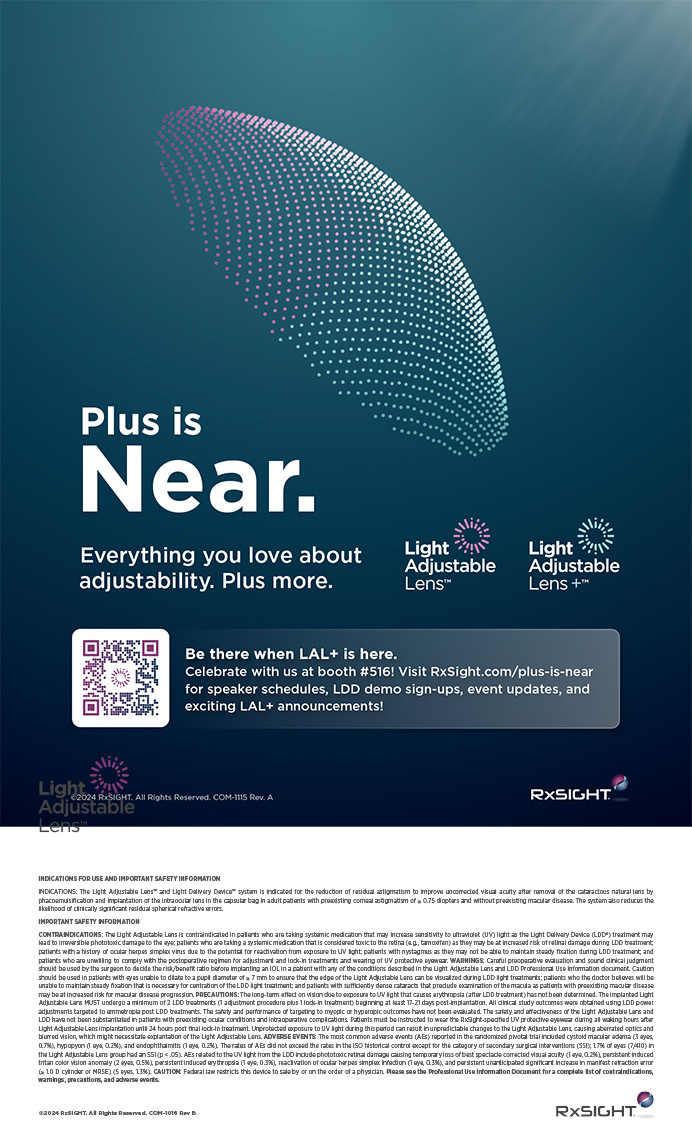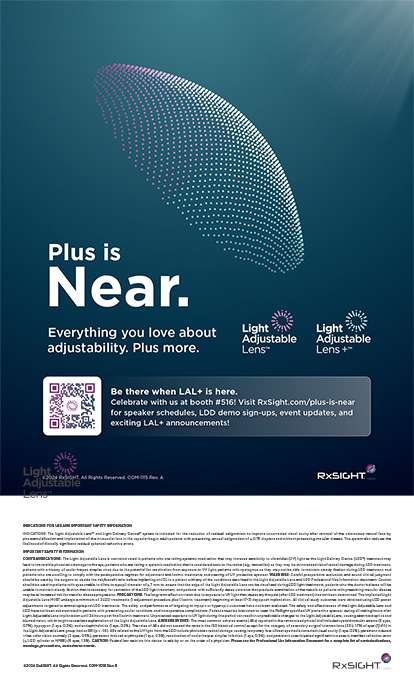CASE PRESENTATION
A 75-year-old white male presented for cataract surgery with a history of peripheral iridectomy. During surgery, I noted that this patient had a shallow chamber and unusually lax zonules, for no reason that I could immediately determine. I first noticed these problems when I punctured the anterior capsule; the entire bag moved as I tore the capsulorhexis (Figure 1). Although the eye did not initially have a high IOP, creating the capsulorhexis was challenging because of the extreme laxity of the zonules, especially between the 6- and 9-o'clock locations. I completed the capsulorhexis successfully and performed painstaking, repeated, and multidirectional hydrodissection. I used very small waves of fluid because of the limited space resulting from the shallow chamber and my fear of causing fluid to become posteriorly directed early in the case.
I sacrificed efficiency in the nuclear removal phase in favor of gentle respect for the zonules. This process would have been much easier and more efficient if I had felt at liberty to use a capsular tension ring before beginning phacoemulsification. Because the investigational device exemption study for the Morcher device is closed, however, I opted to proceed without it. Despite the duration of the nucleus removal, the effective phacoemulsification time was only 1.93 seconds, and the power usage was 1.6% due to the efficiency of the Sovereign WhiteStar (AMO, Santa Ana, CA) power modulation. I lowered the flow parameters from my routine, although only slightly, due to the shallow chamber.
Although the capsular bag fornix was poorly expanded, I was able to complete cortical removal without mishap. Inserting the implant with a forceps would not have been nearly as safe as cartridge insertion, because the cartridge nicely plugs the wound and discourages viscoelastic leakage from the chamber. A high-viscocity material such as Healon GV (Pharmacia Corporation, Peapack, NJ), used in place of my usual Provisc (Alcon Laboratories, Fort Worth, TX), helped me to place the trailing haptic safely. At this point, however, the subtle but important sign of the iris' rising up to the internal Descemet's valve indicated the threat of iris prolapse. I was careful not to breach the main incision and not to overfill viscoelastic through the paracentesis. I determined via palpation that the eye was firm and therefore diagnosed retro-directed fluid. I asked the anesthesiologist for mannitol (0.25 g/kg IV push) and suspended the surgery for the 15 minutes that mannitol requires for maximal effect. During the interim, the nurse cared for the corneal surface, and I educated the patient about the situation.
I checked his vision in order to rule out IOP greater than that of the central retinal artery and then left to perform my next case in another room. Upon returning, I had hoped to find the iris falling away from the wound and the chamber susceptible to deepening, but this was not the case.
HOW WOULD YOU PROCEED?1. Leave the viscoelastic in place and send the patient home on ocular hypotensive medications?
2. Perform a pars plana dry vitrectomy tap to allow the eye to soften, and remove viscoelastic from the anterior and posterior chamber?
3. After preplacing a suture in the clear corneal incision to protect against iris prolapse, risk removal of viscoelastic without prior intervention to relieve posterior pressure?
4. Wait 2 or 3 hours to see if the eye softened enough to permit viscoelastic removal and confirm the watertight status of the clear corneal incision?
SURGICAL COURSE
At this point, I had to determine the definitive surgical resolution, either via vitreous tap or tincture of time. If I had chosen the former option, I would have injected a subconjunctival bleb of lidocaine over the pars plana, 3 mm back from the limbus and away from the 6- and 9-o'clock location of the ciliary arteries, in order to keep the patient comfortable under topical anesthesia. I would have created a small, fornix-based conjunctival flap and lightly performed an eraser-tip cautery after measuring the location with calipers.
I would have used a 20-g MVR blade directed toward the optic nerve to incise the sclera and inserted the vitrectomy handpiece, with the irrigating sleeve removed, under direct visualization through the pupil. I would then have perfor-med a “dry” vitreous tap without replacing the fluid until the eye had softened and the anterior chamber could have been reformed. Then, I would have had to suture the incision after wecking to ensure that there was no vitreous incarceration, and then coapted the fornix flap.
In this case, because it was so near completion, I opted to undrape the patient, administer acetazolamide and timolol, and wait a period of 2 hours. I reprepped and redraped the eye, which allowed the irrigation and aspiration tip to safely enter and evacuate the viscoelastic. I opted not to clean under the implant in the posterior chamber, as I do on every routine case, and instead prescribed hypotensive medications postoperatively. This final intervention was essential, in my opinion, to ensure that the incision was watertight without stitching. Previously, although the eye was not leaking, the wound had not technically been closed but simply plugged internally by the iris, and the chamber had been formed by the presence of viscoelastic. Only when the internal lip is free and clear and the eye is watertight can the surgeon be assured of a reliable seal.
OUTCOME
The patient fared extremely well. His visual acuity was 20/20 on the first postoperative day with a pressure of 15 mm Hg. In retrospect, it is likely that this patient has plateau iris syndrome. The etiology of the extreme zonular laxity remains obscure. The second eye does not yet require surgery, but I will carefully watch the angle.


